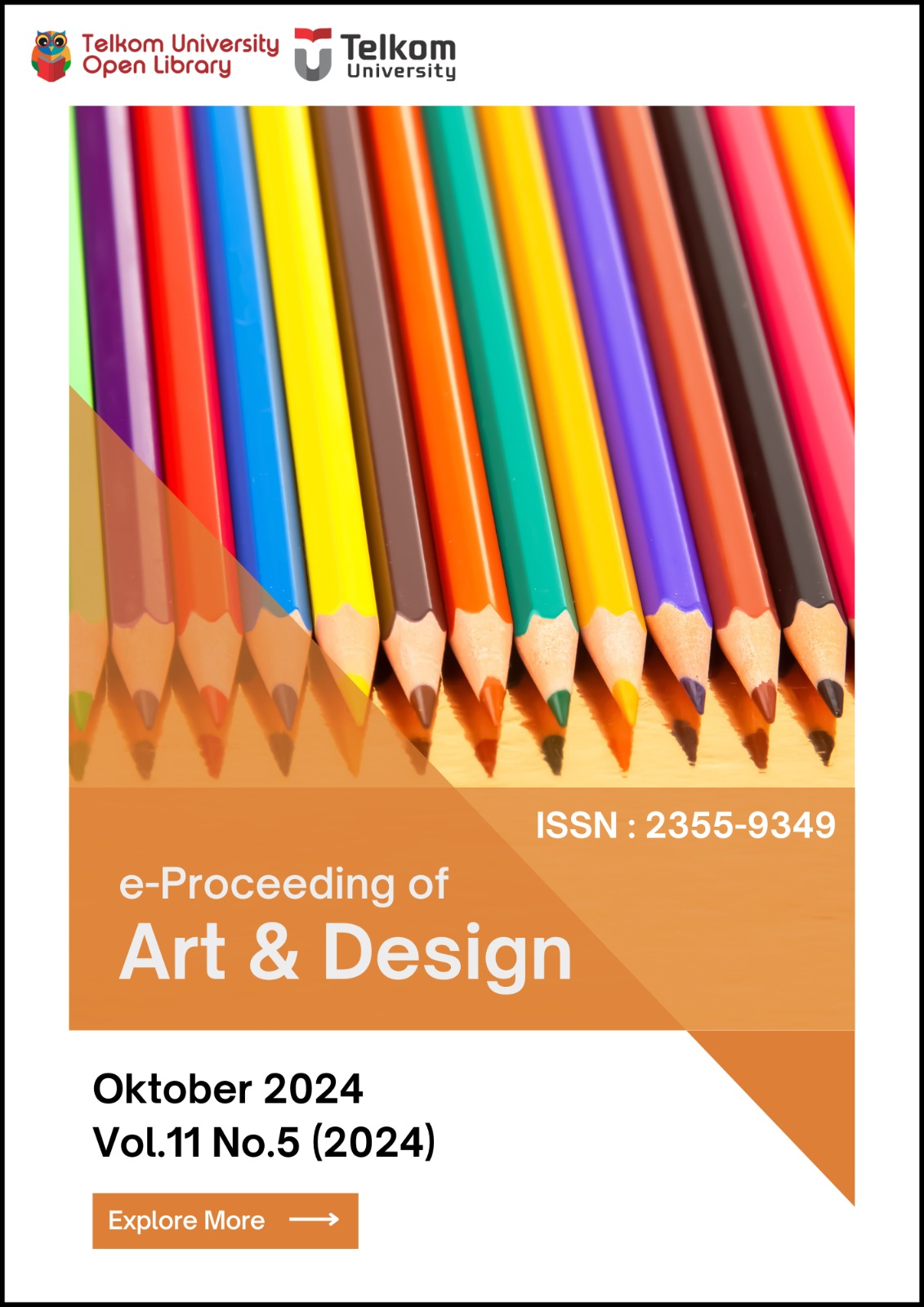Designing an Art Gallery for Children with Special Needs (ABK) in Bandung City Using an Inclusive Design Approach
Abstract
Children with special needs (ABK) are children who experience significant abnormalities or deviations, physically, mentally-intellectually, socially and emotionally in the process of growth and development compared to other children their age. This condition makes them need special education(Leli Erawati dkk., 2016). Based on the Bandung City Statistics Agency in 2022, there were 9,020 people with disabilities in Bandung City with disorders such as physical, visual, hearing, mental and other disabilities. Behind the shortcomings they have, there is also the ability to work like other children. Art therapy is one of the most popular and in-demand therapies. With art therapy, they can express themselves more through art. The works that have been made will be exhibited in the Art Gallery. Different from other exhibitions, the design of this Art Gallery is expected to be more friendly to children with special needs. With the hope that this Art Gallery can equalize opportunities in the gallery in enjoying art. The approach used is an inclusive design approach with the hope of meeting the needs of Art Gallery users who come from various types of visitors, as well as equalizing user activities and behavior in terms of facilities, accessibility, and interior.
Keywords: children with special needs, art, art gallery, inclusive design
References
Aishwarya Jadhaf. (2016). Effect of Texture on Autistic Children. University of Pune.
Badan Pusat Statistik Provinsi Jawa Barat. (2022). Jumlah Penduduk Disabilitas Jawa Barat menurut Kabupaten/Kota (Jiwa), 2021-2022. Badan Pusat Statistik Provinsi Jawa Barat.
Budianto, C. A., Anggraeni, S., Kusuma, A. T., & Wasiska, N. S. (2018). Studi pengaruh warna interior ruang rawat inap terhadap tingkat stress pasien (studi kasus rsia di Surabaya). Jurnal Desain Interior, 3(2), 59–64.
Dinas Kebudayaan dan Pariwisata Kota Bandung. (2021). Perkiraan Jumlah Kunjungan Wisatawan Ke Kota Bandung Berdasarkan Pintu Masuk Kota Bandung (Jiwa), 2019-2021. Badan Pusat Statistik Kota Bandung.
Firmansyah, R., Wulandari, R., Cardiah, T., Syahida, A. N., & Hasanah, N. (2019). Analysis of the Application of Universal Design Standards to InteriorArchitecture Design. 6.
Gita Kartika, S., Mustaqimah, U., & Arsitektur Fakultas Teknik Universitas Sebelas Maret Surakarta, P. (2018). PENERAPAN DESAIN INKLUSIF PADA PERANCANGAN SANGGAR PAUD INKLUSIF DI YOGYAKARTA. Dalam SENTHONG: Vol. I (Nomor 1).
Kamus Besar Bahasa Indonesia (KBBI). (t.t.). Harmonis. Kamus Besar Bahasa Indonesia (KBBI).
Kaunang, S. A., & Ardianto, O. P. S. (2023). Kajian Konsep Multi-sensory Experience pada Interior Museum Batik Indonesia sebagai Sarana Edukasi & Rekreasi mengenai Batik bagi Pengunjung Usia Muda. Jurnal Sains dan Seni ITS, 11(4), F124–F129.
Keumala, C. R. N. (2016). Pengaruh Konsep Desain Universal Terhadap Tingkat Kemandirian Difabel: Studi Kasus Masjid UIN Sunan Kalijaga dan Masjid Universitas Gadjah Mada. INKLUSI, 3(1), 19–40.
Leli Erawati, I., Margareta Sinaga, R., Universitas Lampung, F., & Soemantri Brojonegoro No, J. (2016). PENDIDIKAN KARAKTER BANGSA PADA ANAK BERKEBUTUHAN KHUSUS DALAM PENDIDIKAN INKLUSIF 1). Dalam Jurnal Studi Sosial (Vol. 4, Nomor 1).
Neufert, E., & Neufert, P. (2012). Architects’ data. John Wiley & Sons. Robillard, D. A. (1982). Public Space Design in Museums. https://dc.uwm.edu/caupr_mono/16
Susantio, D. (2013). Galeri itu Bukan Museum. Koran Tempo.
Undang-Undang Republik Indonesia. (2016). Undang-Undang Republik Indonesia Nomor 8 Tahun 2016 Tentang Penyandang Disabilitas.
Wulandari, A. A. A. (2014). DASAR-DASAR PERENCANAAN INTERIOR MUSEUM. 5(1), 246–257.






